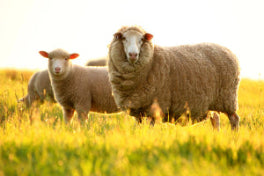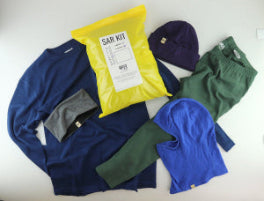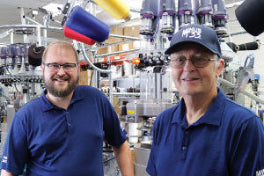Wool has been used as clothing for thousands of years. By 3000 BC, ancient civilizations such as the Sumerians, Egyptians, and later the Greeks and Romans, were spinning and weaving wool into textiles. Wool’s warmth, durability, and ability to retain heat made it a staple fabric for many cultures throughout history.
Wool is a 100% renewable, 100% biodegradable fiber. It’s naturally anti-odor, it retains warmth even when wet, wicks moisture away from the skin, and regulates temperature better than synthetic alternatives. Even in the summer, microweight wool offers breathability, moisture control, anti odor and sun protection benefits making it ideal for temps above 90 degrees.
And here’s an interesting fact, when wool’s porous inner fibers absorb water, the fiber breaks down the hydrogen bonds in the water. That chemical reaction actually generates heat. Experiments on this process have shown that one kilogram of merino wool can produce as much heat over eight hours as an electric blanket!
Despite all these amazing natural benefits, many companies have turned to polyester and other synthetic fibers as a cost-saving measures.
Why? Polyester is cheap to produce, requires minimal processing, and is highly durable. It allows manufacturers to create mass quantities of clothing at low prices, appealing to consumers looking for affordability and convenience.
But these cost cutting strategies often come at a long-term cost to the environment and public health. While polyester clothing may be cheaper upfront, its environmental footprint is immense, contributing to global plastic pollution, climate change and more.
Polyester is derived from petroleum, a nonrenewable resource, making its production highly energy-intensive.
Despite efforts to recycle polyester, the process is inefficient, and most polyester garments eventually end up in landfills, where they take hundreds of years to decompose.
Additionally, these synthetic fibers shed microplastics during washing, polluting oceans, rivers, and even the air we breathe. Clothing made from synthetic fibers, including polyester, nylon, and acrylic, is a major contributor to this pollution. An average load of laundry releases appx. 700,000 microfibers.
The production of Nylon releases nitrous oxide, a greenhouse gas 300 times more potent than carbon dioxide.
Acrylic fibers require toxic chemicals during manufacturing, contributing to air and water pollution.
Even Bamboo, often marketed as eco-friendly, is problematic. Bamboo (aka.. rayon or viscose) undergoes a chemically intensive process that involves toxic solvents like carbon disulfide. This process releases harmful emissions into the environment and poses health risks to workers. So while bamboo itself is a renewable resource, the manufacturing process for bamboo rayon negates many of its supposed environmental benefits.
Today, we’re only starting to learn about the negative health effects that microplastics have on our bodies.
Studies have shown that microplastics can:
* Cause inflammation and cellular damage when they accumulate in tissues.
* Disrupt hormones due to endocrine-disrupting chemicals like BPA and phthalates.
* Lead to respiratory issues when inhaled
* Affect digestion and gut health, altering microbiota balance.
* Penetrate the bloodstream and vital organs, raising concerns about long-term effects.
On a positive note - Some brands are exploring alternatives like Lyocell (Tencel), a fiber made from wood pulp, often eucalyptus trees.
The production process uses a "closed-loop" system, meaning that the solvents used to dissolve the wood pulp are recycled and reused, significantly reducing waste and environmental impact. Like wool - it’s biodegradable and compostable so it naturally breaks down at the end of its life cycle.
A truly sustainable approach to fashion requires more than just recycling—it requires rethinking the entire system. It means moving away from disposable clothing and toward high-quality, long-lasting garments made from sustainable materials. It means embracing innovative solutions for textile-to-textile recycling and reducing waste wherever possible.
At Minus33, we made a conscious decision not to jump on the synthetic bandwagon to save money. As textile engineers with over a century of experience, we understand the true environmental cost of synthetic fibers, and we refuse to compromise our values.
Instead of cutting corners, we continue to invest in high-quality, sustainable Merino wool, even though it costs more.
We take our responsibility seriously. That’s why our NH sock factory, and our suppliers are all OEKO-TEX certified, Woolmark certified, and committed to sourcing our wool from ethical farms that prioritize animal welfare and environmental sustainability.
Our dedication to these standards ensures that every piece of clothing we produce meets the highest quality and sustainability benchmarks.
How Our Sustainability Practices Saves Lives
As a manufacturer, sometimes, things don’t go as planned. We often accumulate factory seconds — products with minor imperfections that can’t be sold. We also deal with customer returns—items with a rip here or a hole there.
Rather than discarding these garments, we saw an opportunity. We began repairing and repurposing these garments into warming kits for search and rescue, teams to take on missions.
These kits include:
* Merino wool base layers—tops and bottoms that insulate the body.
* Socks, hats, and gloves—to protect extremities and preserve heat in critical areas.
Since the inception of this initiative in 2019, Minus33 has provided hundreds of SAR teams across the country with free warming kits, directly aiding in countless rescues. These kits aren’t just about clothing - They’re about giving someone a fighting chance.
Be Part of the Solution
You don’t have to be a clothing manufacturer to make a difference.
* Purchase a HikeSafe card ($25 person/$35 Family -or- NH Fish/hunt license)
* Learn about the 10 essentials pieces of gear that you should always have - The AMC website has a great guide.
* Support Search & Rescue teams—volunteer, donate, or spread awareness.
* Choose sustainable brands that prioritize quality over quantity. Check their green certifications and make sure their sourcing responsibly.
* Donate old unused gear to a charity - or - sell it for some extra cash on Ebay, Poshmark or Depop.
* Retrofit your washing machine with a microplastic filter or washing bag to catch fibers before they make it into wastewater streams.
* And most importantly - Educate yourself — learn what your clothing is made of and where it will end up at the end of its lifecycle.
So, the next time you're gearing up for an adventure in the White Mountains, or anywhere for that matter, consider the power of wool. It's more than just clothing; it's a connection to the past, a resource for the present, and a vital thread in weaving a more sustainable future.






